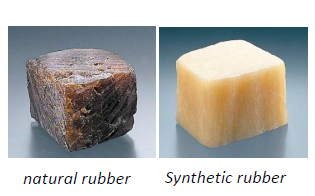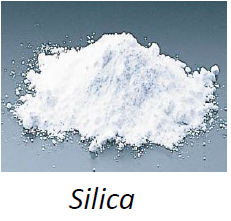Tire rubber compounds and performance:
Different characteristics are required for each type of tire or tire part.For example, a PCR tire tread compound is required to provide a high level of wet performance and low rolling resistance at the same time,
and a TBR tread compound is required to have good heat resistance,wear resistance, and cut resistance. Tire sidewalls require good weather resistance, aging resistance and ozone resistance, etc. Inorder to meet these requirements, many kinds of rubber compounds are used in each tire. These rubber compounds are made by mixing polymers, filler materials, softeners and various other chemicals.

Next, we‘ll talk about the polymers and reinforcement material, their types, characteristics, and uses. Every material used in rubber performs a very important function.
Rubber compound Polymers:
There are five main types of rubber polymers that are used in tire manufacturing. This list includes natural
rubber and four types of synthetic rubber.

Synthetic rubber polymers are used in combination with natural rubber to create tire components with specific physical and chemical properties. These rubber properties determine the characteristics of each tire component and the overall performance of the tire.
Natural Rubber (NR):
NR is made from latex taken from rubber trees, mainly grown in Southeast Asia. Although there are now various kinds of synthetic rubber available, natural rubber is still used extensively in tires.
Styrene Butadiene Rubber (SBR):
SBR is now the most common synthetic rubber used in tires.It is made by polymerizing Styrene and Butadiene together. Changes to the Styrene content and polymerization process are used to create various types of SBR’s with different characteristics.
Butadiene Rubber (BR):
Like SBR, BR is a common synthetic rubber used in tires. However unlike NR or SBR there is less interaction among the molecules , and for this reason, a compound of BR only or high BR content would have high flexibility but poor elongation resistance.BR provides good resistance to wear, and improves low temperature flexibility. It is generally blended with other types of rubber in order to optimize tire performance.
Isoprene Rubber (IR):
IR is produced by artificially synthesizing Isoprene which is a main component of NR, thus its characteristics are naturally quite similar to NR.
Halogenated Butyl Rubber:
Halogenated Butyl Rubber is made by halogenating (adding chlorine or bromine) to Butyl Rubber, it offers excellent air impermeability.
The main usage of polymers in the tire rubber compound:

Rubber compound- Filler material - Carbon black and Silica:
Carbon black is used as a reinforcing filler in tires.
The carbon black greatly improves tensile strength,tear strength, fatigue resistance, and wear resistance of rubber compounds.
The particle size of carbon black used in tire manufacturing is just 10 to 50 nanometers.

Particle and Structure of carbon black:
Depending on the rubber mixing,Carbon black particles and structure look like the figure to the right.

Reinforcement of Rubber compound by Carbon Black:
Recently, Silica has become a popular reinforcing material for tread rubber polymer, because it has the benefit of enhancing wet grip while also providinglower rolling resistance.
Carbon black has many active points ,micro pores, and functional groups on its surface which create both chemical
and physical interactions between the Carbon black and the rubber polymer chains.

Because of the interaction between polymer and carbon black, the rubber polymer is reinforced by carbon black, and the edge of the polymer chain is chemically tied to the filler.
Reinforcement of Rubber compound by Silica:
Recently, Silica has become a popular reinforcing material for tread rubber polymer, because it has the
benefit of enhancing wet grip while also providing lower rolling resistance.


